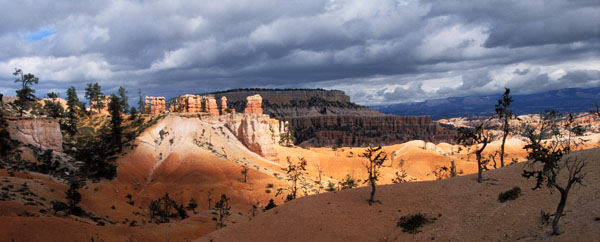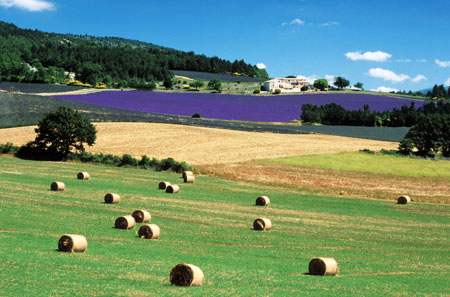
The term "landscapes" can be invoked to describe a wide range of subject matter, but is used here to fill the gaps left between canyons, rivers, mountains, snow scenes, deserts and others specifically mentioned in this section.
Photogenic landscapes are found all over the globe in places of no particular note. They are almost certainly to be found within a short distance of wherever you are reading these words. The simplest of scenes, perhaps consisting of nothing more than a tree or a stream, can be used to create wonderful images. The principal requirements are a seeing eye and beautiful light.
A seeing eye is as essential as a camera but difficult to acquire other than through experience. Look at large numbers of images published by experts and try to understand what makes their pictures special. Then look at your own images with a view to identifying what they lack. In many cases it may be nothing more than beautiful light.
 Good light is more or less essential for a successful image. Conversely, it is also true that where there is good light, successful images are not far away. This is essentially why landscape photographers get up before dawn, when the air is cool and moist, to watch the sun rise and the mist clear. Wonderful transient effects can be captured at this optimistic time of day. Sunset can also be a rewarding time as colours merge and become more subtle. Warmer hues predominate and moody atmospheres prevail.
Good light is more or less essential for a successful image. Conversely, it is also true that where there is good light, successful images are not far away. This is essentially why landscape photographers get up before dawn, when the air is cool and moist, to watch the sun rise and the mist clear. Wonderful transient effects can be captured at this optimistic time of day. Sunset can also be a rewarding time as colours merge and become more subtle. Warmer hues predominate and moody atmospheres prevail.
Simple compositions are often the most successful. Try to identify a key element in good light and then work around it to find the best viewpoint and camera angle. Avoid placing the horizon across the middle of the frame, and strive to position key compositional elements in a balanced manner away from the centre of the image. It is also worth looking for lead-in lines, perhaps created by footpaths or fences, which lead the eye towards the centre of interest.






